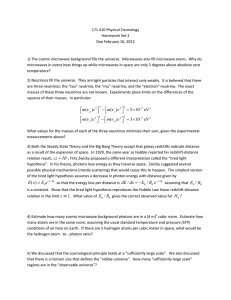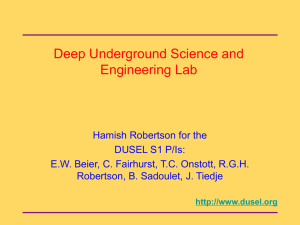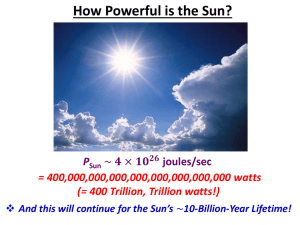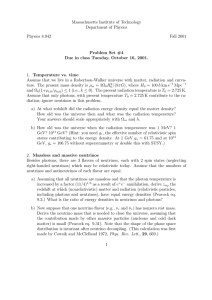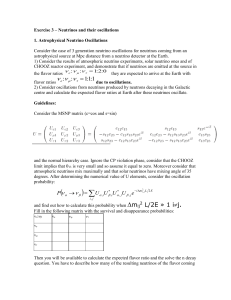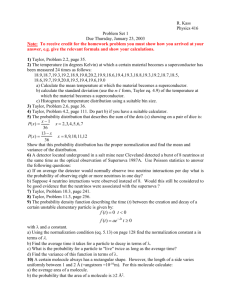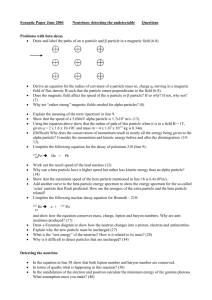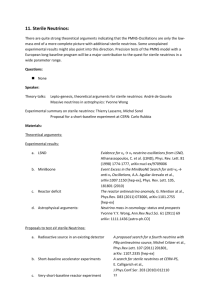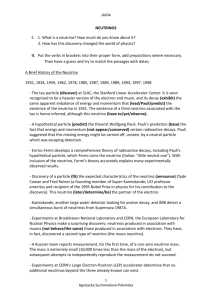Recently, the Oscillation Project with Emulsion
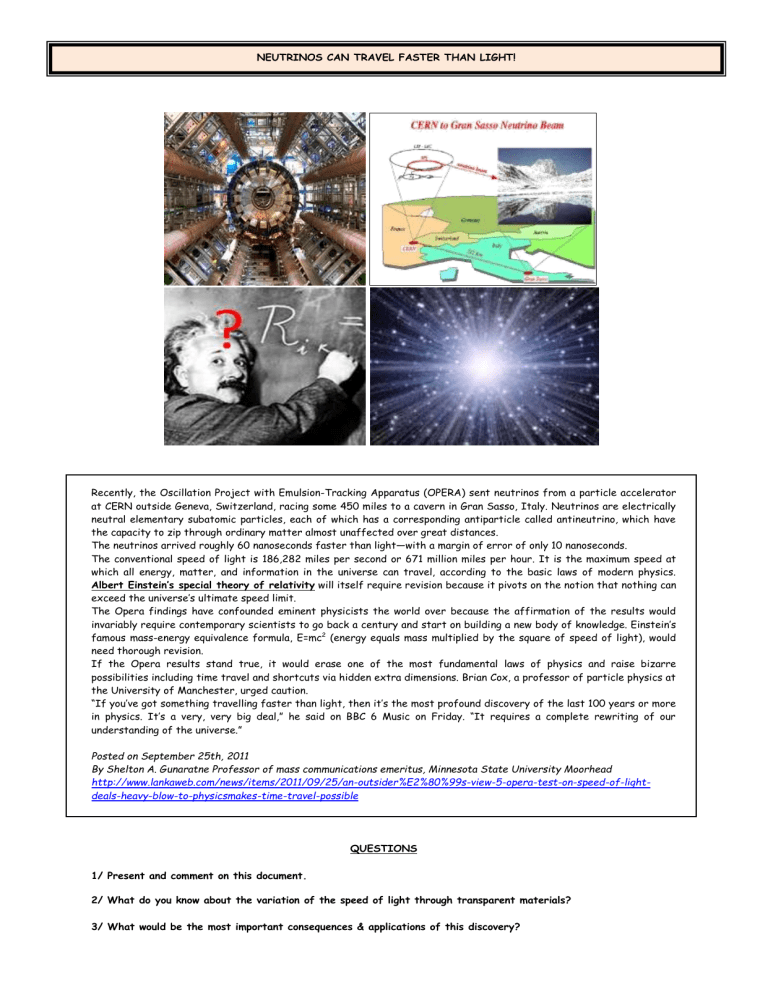
NEUTRINOS CAN TRAVEL FASTER THAN LIGHT!
Recently, the Oscillation Project with Emulsion-Tracking Apparatus (OPERA) sent neutrinos from a particle accelerator at CERN outside Geneva, Switzerland, racing some 450 miles to a cavern in Gran Sasso, Italy. Neutrinos are electrically neutral elementary subatomic particles, each of which has a corresponding antiparticle called antineutrino, which have the capacity to zip through ordinary matter almost unaffected over great distances.
The neutrinos arrived roughly 60 nanoseconds faster than light—with a margin of error of only 10 nanoseconds.
The conventional speed of light is 186,282 miles per second or 671 million miles per hour. It is the maximum speed at which all energy, matter, and information in the universe can travel, according to the basic laws of modern physics.
Albert Einstein’s special theory of relativity will itself require revision because it pivots on the notion that nothing can exceed the universe’s ultimate speed limit.
The Opera findings have confounded eminent physicists the world over because the affirmation of the results would invariably require contemporary scientists to go back a century and start on building a new body of knowledge. Einstein’s famous mass-energy equivalence formula, E=mc 2 (energy equals mass multiplied by the square of speed of light), would need thorough revision.
If the Opera results stand true, it would erase one of the most fundamental laws of physics and raise bizarre possibilities including time travel and shortcuts via hidden extra dimensions. Brian Cox, a professor of particle physics at the University of Manchester, urged caution.
“If you’ve got something travelling faster than light, then it’s the most profound discovery of the last 100 years or more in physics. It’s a very, very big deal,” he said on BBC 6 Music on Friday. “It requires a complete rewriting of our understanding of the universe.”
Posted on September 25th, 2011
By Shelton A. Gunaratne Professor of mass communications emeritus, Minnesota State University Moorhead http://www.lankaweb.com/news/items/2011/09/25/an-outsider%E2%80%99s-view-5-opera-test-on-speed-of-lightdeals-heavy-blow-to-physicsmakes-time-travel-possible
QUESTIONS
1/ Present and comment on this document.
2/ What do you know about the variation of the speed of light through transparent materials?
3/ What would be the most important consequences & applications of this discovery?
NEUTRINOS CAN TRAVEL FASTER THAN LIGHT!
1/Presentation of the document
This document is a part of a text written on September 25 th by a professor of physics, S. A. Gunaratne, who works at
Minnesota State University. The scientist presents OPERA experiment, which focuses on the study of neutrino properties. This experiment is located in Geneva. It uses a neutrino beam produced by CERN in Switzerland. Neutrinos are electrically neutral, weakly interacting elementary subatomic particles with a small but non-zero mass. Researchers measured that these neutrinos travel faster than light!
During the experiment, neutrinos travelled 450 miles ≈ 450x1.6km = 720 km. They arrived about 60 ns faster than light; as 60 ns is 60 billionth of second, it corresponds roughly to a distance equals to 60.10
-9 x 3.10
8 = 180x10 -1 = 18 meters! As we can see, the difference of speed is not so important… but the impact that an effect of this type can have on physics is too big and it is still too early for such considerations. It is the first time we observe that an elementary particle travels faster than light which is completely unexpected in physics as we know it. These results have to be confirmed, but it would be the most important discovery of the last 100 years because modern physics states that nothing can go faster than light.
2/ Speed of light through transparent materials & consequences
Speed of light:
Normally nothing can travel faster than photons! A photon is a little packet of energy, an elementary particle that is the basic unit of light. It has no mass. This is why speed of light is considered as an upper limit for the speed of objects with mass. This is an axiom of modern physics.
Let’s remind ourselves about a few properties of light…
We know that light travels trough transparent material as glass or water. We also know that as light passes from one transparent medium to another, it changes speed, and bends. The variation of speed is measured by the refractive index n of the mediums: n = c/v
Where: c = speed (celerity) of light in vacuum = 3.00x10
8 v = speed of light in the medium
m.s
-1
As the speed of light in a given medium is lower than its speed in vacuum, we can deduce that the refractive index is necessarily higher than 1.
A direct consequence of the variation of the speed of light: Snell’s law
Snell's law describes the bending of a light ray as it passes from one medium to another, for example from air to glass.
It provides the foundation for lens-based optics.
The relationship between the angles of incidence and refraction is: n
1
x sinθ
1
= n
2
x sinθ
2
3/ Consequences & applications of this discovery
Well, to tell right, it’s hard to say…
The modifications that a result of this type can produce in the laws of physics can be summarised as a more complex time/space structure in relation to the structure normally inferred in the physics we use today. This result may open a door towards the overall, large-scale comprehension of the structure of the Universe. If it is confirmed that a neutrino travels faster than light, it will partly challenge the theory of general relativity. The fact that, as part of Einstein's theory, particles can't travel at a higher speed than light is directly linked to the time-space structure and this result therefore suggests that, at a very small scale, such structure is significantly different from what we imagined. This is interesting as it could apply to the very first instants of the universe as envisaged by the Big Bang theory, for which we do not think at this stage that our equations (that of relativity and that of quantum theory) are applicable. This may be the first, very small insight into a new physics that would have applied during the Big Bang. It is therefore of paramount importance in our comprehension of time, space and the universe.
Here is a part (abstract and conclusions) of the original paper published by Scientists in September of 2011:
QUESTIONS
1/ Highlight with a fluorescent pen the words corresponding to:
Faisceau
Précis(e)
Échantillon
Rechercher
Le vide
Incertitudes
Energie moyenne
Conçu/imaginé
2/ Translate the sentence:
